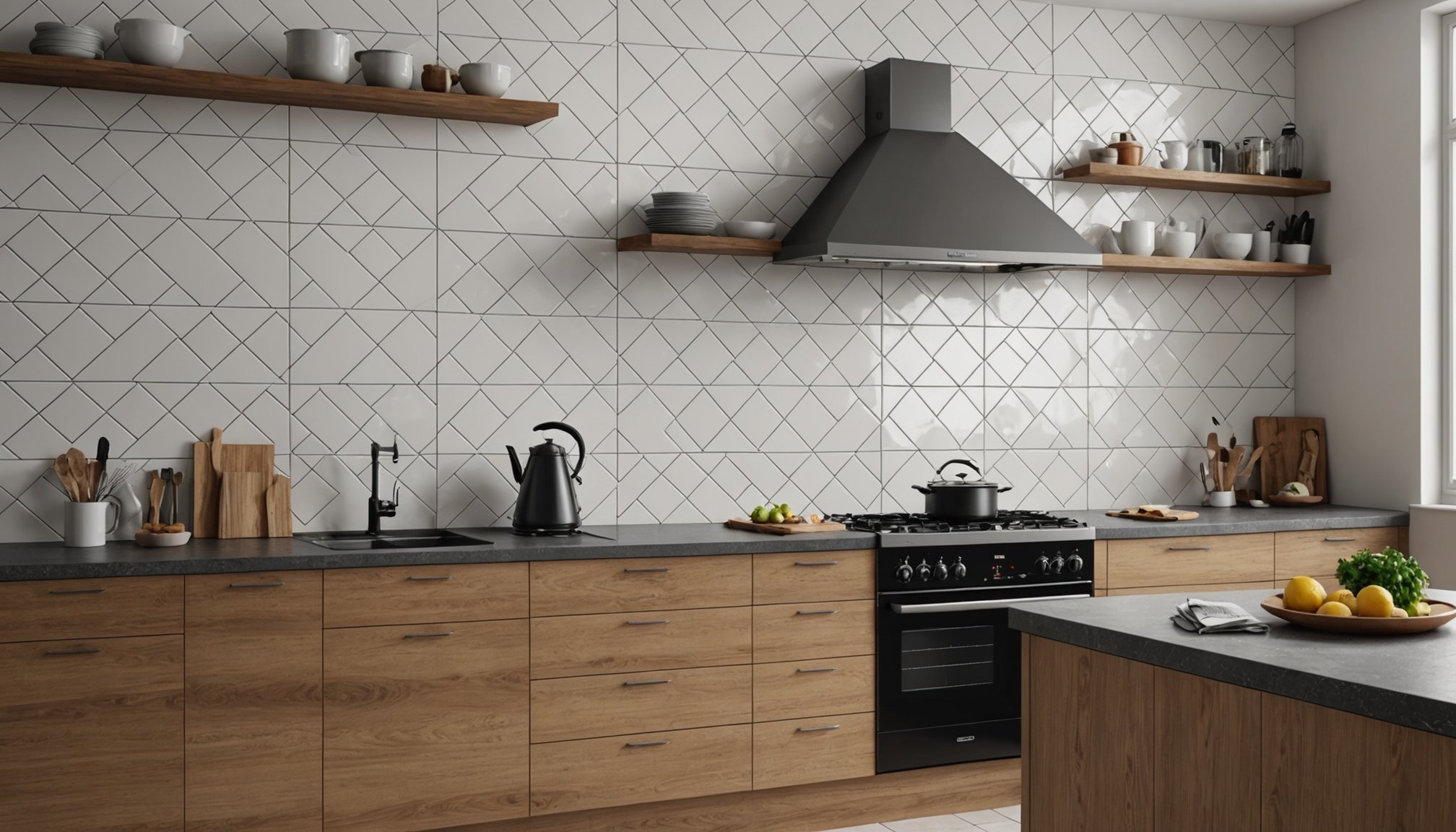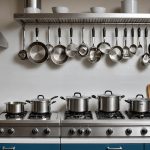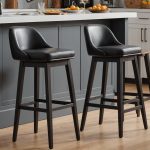Choosing the Perfect Kitchen Tiles for UK Weather: A Comprehensive Handbook
When it comes to selecting kitchen tiles that can withstand the UK’s often unpredictable and damp weather, there are several key factors to consider. From durability and maintenance to design and functionality, the right tiles can make a significant difference in the comfort, aesthetics, and longevity of your kitchen.
Understanding Your Needs: Indoor vs. Outdoor Considerations
Before diving into the specifics of tile selection, it’s crucial to understand the unique demands of your kitchen environment. Here are some considerations for both indoor and outdoor spaces:
Indoor Kitchen Tiles
For indoor kitchens, the focus is on tiles that are durable, easy to maintain, and resistant to moisture and heat.
-
Porcelain and Ceramic Tiles: These are highly recommended for indoor kitchens due to their low water absorption rates, durability, and ease of maintenance. Porcelain tiles, in particular, are ideal for high-traffic areas and can mimic the look of natural stone without the high maintenance requirements[1][2].
Topic to read : The Definitive UK Homeowner’s Handbook: Choosing the Perfect Kitchen Shelving Units
-
Natural Stone Tiles: While natural stone like marble, granite, and slate can add a luxurious touch, they often require periodic sealing to maintain their resistance and prevent staining. However, their unique textures and earthy tones can bring a timeless elegance to your kitchen[2][4].
Outdoor Kitchen Tiles
If you have an outdoor kitchen or an area that transitions between indoors and outdoors, the tiles need to be even more resilient.
-
Outdoor-Grade Porcelain Tiles: These tiles are frost-proof, non-porous, and extremely durable, making them perfect for patios, balconies, and rooftops. They can withstand harsh weather conditions, including frost and intense sunlight[1][2].
-
Quarry Tiles and Terrazzo Tiles: These tiles are also highly durable and weather-resistant, making them suitable for outdoor spaces. Quarry tiles offer excellent slip resistance, while terrazzo tiles combine durability with stylish patterns[3].
Key Characteristics of Durable Kitchen Tiles
When choosing kitchen tiles, several key characteristics should be at the forefront of your decision-making process.
Low Thermal Conductivity
Tiles with low thermal conductivity are essential for maintaining a comfortable surface temperature. This is particularly important in kitchens where cooking activities can generate significant heat.
- Porcelain Tiles: Known for their low thermal conductivity, porcelain tiles do not absorb or retain heat easily, keeping surfaces cooler and more comfortable[1].
Water and Moisture Resistance
Given the UK’s damp climate, tiles that are highly resistant to water and moisture are a must.
- Porcelain and Ceramic Tiles: These tiles are non-porous and have a low water absorption rate, making them ideal for areas prone to spills and moisture[1][2].
UV Resistance
For outdoor spaces, UV resistance is crucial to prevent fading and degradation.
- Porcelain Tiles: These tiles can withstand prolonged exposure to UV rays without fading or degrading, making them perfect for outdoor areas like patios and rooftops[1].
Comparison of Tile Materials
Here is a detailed comparison of some common tile materials to help you make an informed decision:
| Material | Durability | Water Resistance | Maintenance Requirements | Cost |
|---|---|---|---|---|
| Porcelain Tiles | High: Withstands sandstorms, high heat, and wear without damage. | Excellent: Non-porous, resists moisture and humidity effectively. | Low: Easy to clean, resistant to dirt, sand, and stains. | Moderate to High |
| Ceramic Tiles | High: Very durable but can be susceptible to chipping or weathering. | Excellent: Low water absorption rate. | Low: Easy to clean, but may require occasional sealing. | Moderate |
| Natural Stone (e.g., Marble, Granite) | High: Durable but can be prone to chipping or cracking. | Varies: Some stones like limestone are porous and absorb water, while others like granite are more resistant. | Moderate: Requires periodic sealing to maintain resistance and prevent staining. | High |
| Terrazzo Tiles | High: Durable and resistant to weather changes. | Excellent: Resists moisture effectively. | Moderate: Requires occasional sealing to maintain shine. | Moderate to High |
| Quarry Tiles | High: Durable and slip-resistant. | Excellent: Resists moisture effectively. | Low: Easy to clean and maintain. | Moderate |
Recommended Tile Styles for Your Kitchen
Here are some tile styles that are particularly well-suited for kitchens in the UK:
For Flooring
- Large-Format Porcelain Tiles: Perfect for reducing grout lines and making cleaning easier. These tiles are ideal for high-traffic areas and can mimic the look of natural stone[1][2].
- Stone-Effect Ceramic Tiles: These tiles provide a sophisticated look without the high maintenance requirements of natural stone. They are versatile and can be used in both indoor and outdoor spaces[1].
For Walls and Backsplashes
- Glossy Ceramic Tiles: Enhance your backsplash with a sleek, reflective finish that stays cool and is easy to clean[1].
- Mosaic Tiles: These tiles improve the definition of your space and are commonly used for backsplashes, shower walls, or accent features. They add a stylish touch and work well in smaller areas[2].
For Outdoor Kitchens
- Rustic-Look Porcelain Tiles: Provide a natural, earthy vibe while staying cool and durable. These tiles are perfect for creating pathways and outdoor seating areas[1].
- Terrazzo Tiles: Combine durability with stylish patterns, making them perfect for pathways and outdoor seating. They resist weather changes and maintain their shine for years[3].
Practical Insights and Actionable Advice
Tips for Choosing Wisely
- Indoors: Focus on finishes (matte or polished) and ease of maintenance. Porcelain and ceramic tiles are excellent choices due to their durability and low maintenance requirements[2].
- Outdoors: Ensure the tiles are slip-resistant and weatherproof. Outdoor-grade porcelain and terrazzo tiles are highly recommended for their durability and resistance to harsh weather conditions[1][3].
Installation Considerations
- Subfloor Preparation: Ensure the subfloor is level, clean, and dry before installing tiles. This will prevent any unevenness or moisture issues.
- Grouting: Choose a grout that matches the color of your tiles to create a seamless look. Epoxy grout is highly recommended for its durability and resistance to stains.
Maintenance Tips
- Regular Cleaning: Clean your tiles regularly to prevent dirt and grime buildup. Use a mild detergent and avoid abrasive cleaners that can damage the tile surface.
- Sealing: For natural stone tiles, periodic sealing is necessary to maintain their resistance and prevent staining.
Real-Life Examples and Anecdotes
A Personal Experience with Porcelain Tiles
“I recently renovated my kitchen and decided to go with large-format porcelain tiles for the flooring. The result was astounding – the tiles not only looked like natural stone but also proved to be incredibly durable and easy to clean. Even with the UK’s unpredictable weather, the tiles have withstood the test of time without any issues.”
A Designer’s Perspective
“Porcelain tiles are a game-changer for kitchen design. They offer the look of natural stone without the high maintenance costs. Plus, their durability and resistance to moisture make them perfect for kitchens where spills and splashes are common,” says Jane Smith, a renowned interior designer.
Choosing the right kitchen tiles for the UK weather involves a careful consideration of durability, maintenance, and design. Porcelain and ceramic tiles stand out as top choices due to their low thermal conductivity, water resistance, and ease of maintenance. By understanding your specific needs, comparing different materials, and selecting the right tile styles, you can create a kitchen that is both stylish and functional.
Final Tips and Recommendations
- Consult Professionals: If you’re unsure about the best tiles for your kitchen, consult with a professional who can provide personalized advice based on your specific needs.
- Consider Your Lifestyle: Think about how you use your kitchen and choose tiles that fit your lifestyle. For example, if you have young children or pets, you may want tiles that are easy to clean and resistant to stains.
- Invest in Quality: While it may be tempting to go for cheaper options, investing in high-quality tiles will pay off in the long run. They will last longer and require less maintenance.
By following these guidelines and tips, you can ensure that your kitchen tiles not only enhance the aesthetic appeal of your home but also provide a durable and functional solution for years to come.











